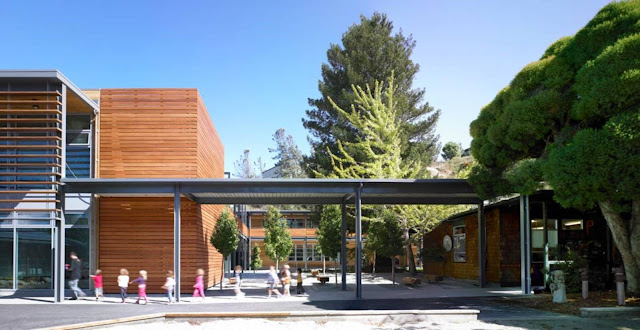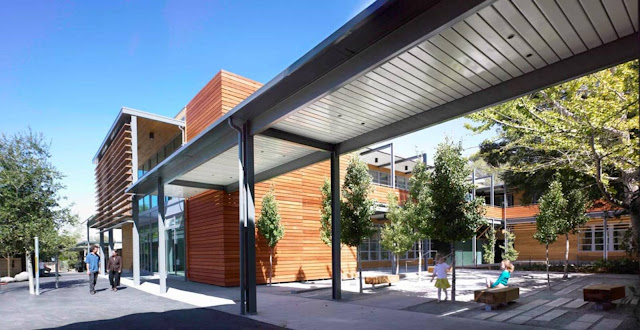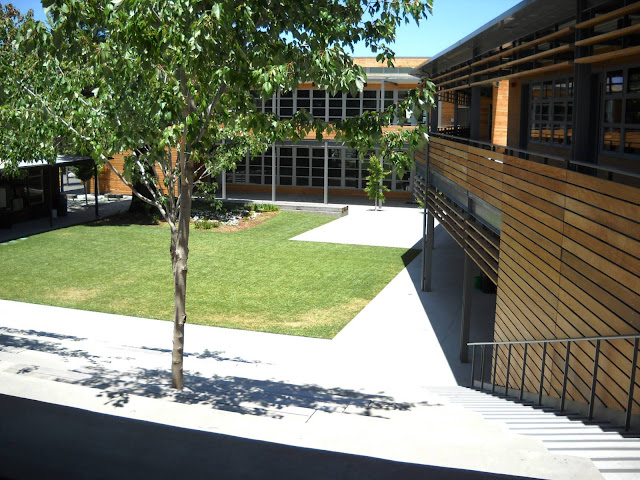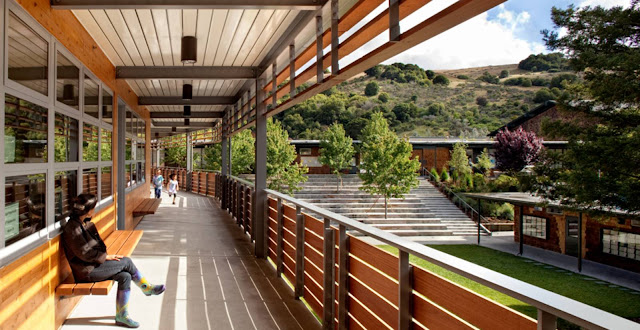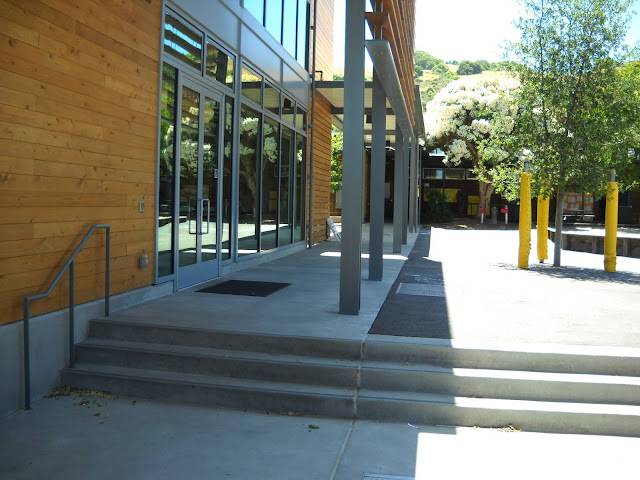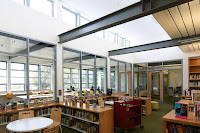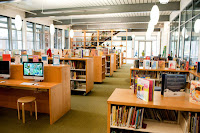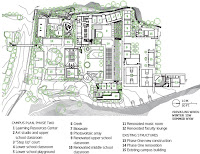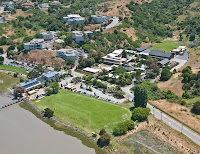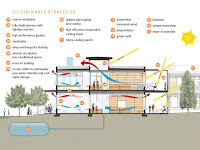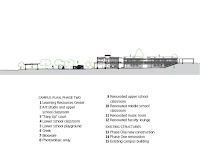The Marin Country Day School (MCDS) is proud to be recognized as the first zero-energy classroom building in North America. “Zero energy” – which means a building consumes less energy than it produces – is the new benchmark for energy performance, exemplifying how buildings everywhere should be designed in the future.
The project received its LEED® Platinum certification from the U.S. Green Building Council in April 2010. Life at MCDS is close to nature; the entire campus is located within its own watershed.
Students walk outside from building to building and the school’s iconic image is a pair of colorful galoshes kindergartners use to tromp through the stream that runs alongside the campus. The new buildings, inseparable from their landscape, hold close to these campus traditions.
The library and classrooms are integrally connected to outdoor learning spaces and fit within the existing campus footprint to preserve natural surroundings. The courtyards, including the terraced Step-Up courtyard, bring this landscape into the heart of the campus.
A restored stream returns the east edge of the campus to a more natural state. MCDS’s vision was to create a library and classrooms that would not simply be a structure for learning, but that would themselves become a part of the curriculum.
These buildings connect to the ecology of their place; the same bioswales that provide Upper School students with a quiet retreat into the landscape also filter the sediments from surface runoff, cleansing the water, recharging the aquifer and reducing pollutants reaching San Francisco Bay.
Rainwater that falls on the roofs is collected and stored in an underground cistern that feeds greywater to toilets and acts as a heat sink to cool the building.
Strategically located overhangs shade the buildings, while thoughtful building orientation and operable windows enable the building to be naturally ventilated and passively cooled. All these natural systems are the result of careful engineering to provide exceptional comfort while maintaining connection to the outdoors.
Energy use may be computer-monitored in real time to both improve building operation and provide students with information on their own environmental footprint.
Exceptional daylighting, natural ventilation, and healthy indoor air quality all help create a high performance learning environment in support of the educational mission of MCDS.
Location Corte Madera, California, USA
Architect : EHDDArchitecture
Commissioning and energy consultant: Stantec
Engineers: Tipping Mar + Associates (structural), Stantec (MEP); Sherwood Design Engineers (civil), Miller Pacific Engineering Group (geotechnical)
Landscape: Conger Moss Guillard (CMG)
General contractor: Oliver & Company
Lighting: TMT Associates with Stantec
Waterproofing: Simpson Gumpertz Heger
Gross area: 2,700 m2
Cost $12.8 million
Year: 2010
Annual purchased energy use: 64 MJ/m2 79% reduction from base case
Annual carbon footprint: 3.9 kg CO2/m2

